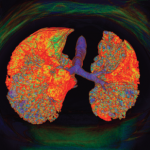A 55-year-old male patient diagnosed with generalized osteoarthritis and diagnosed with end stage renal failure (ESRD) 20 months previously presents to the office to see the rheumatologist. The patient has a commercial insurance plan and Medicare. Which carrier is primary for this visit? Commercial insurance carrier Medicare You do not know because it is not…
Pediatric Rheumatology Learning at the 2019 ACR/ARP Annual Meeting
At this year’s ACR/ARP Annual Meeting, Nov. 8–13, all of the pediatric rheumatology sessions will take place in the same room, making it easy to access all of the exciting content. Planners hope this convenient setup facilitates networking before and after symposia. “In pediatric rheumatology, we are very tight-knit community. This [event] is our opportunity…

Annual Meeting Preview: Rheumatology Research Foundation Activities
Another exciting ACR/ARP Annual Meeting is planned for this November. Show your support for the Foundation’s mission and enjoy your time in vibrant Atlanta at one of the Foundation’s events. Donations made to the Foundation support the extensive awards program that funds research, training and education opportunities for current and potential rheumatologists and rheumatology professionals…

Ethics Forum: Are We Ethically Bound to Support Access to Rheumatologic Care for All?
A 43-year-old woman is establishing care in your new urban clinic after her previous rheumatologist stopped accepting her Medicaid insurance more than a year ago. Since that time, she has been trying to find a new rheumatologist who will accept Medicaid. She lives 90 miles away in a small town without a rheumatologist. Seven years…

Are Opioid Contracts Helpful or Harmful?
The opioid epidemic in the U.S. has destroyed thousands of lives and torn families apart. According to the Centers for Disease Control and Prevention, an average of 130 people in the U.S. die each day from an opioid overdose. From 1999 to 2017, more than 700,000 died as a result of drug overdoses. In 2017,…

Research Sheds Light on Scleromyxedema, a Rare Skin Disorder
Scleromyxedema is a rare, mucinous skin disorder of unknown origin, one of a number of conditions that mimic systemic sclerosis. Although cases of scleromyxedema remain rare, a better understanding of its mechanisms of action could have implications for the research and treatment of scleroderma and related autoimmune conditions, says Laura K. Hummers, MD, ScM, co-director…

Study Says Mothers’ Cardiovascular Health Is Linked to Pregnancy Outcomes in Lupus
A recent study in The Journal of Rheumatology sheds light on the importance of preconceptional cardiovascular health in women with systemic lupus erythematosus. Although many questions remain, improved cardiovascular health measures seem to positively affect pregnancy outcomes, suggesting a potential role for preconception cardiovascular interventions.1 Women with lupus now have healthier pregnancies than in the…

Insights into Interstitial Lung Disease in Rheumatoid Arthritis Patients
MADRID—Rheumatoid arthritis (RA) is among the most common autoimmune diseases in the U.S., affecting approximately 1.3 million U.S. adults.1 Although tremendous treatment advances have been made in recent years, one extra-articular manifestation of RA that continues to pose a challenge with regard to detection and management is interstitial lung disease (ILD). At the 2019 European…

Researchers Seek the Best Methods to Maintain Remission in Vasculitis
MADRID—During the 2019 European Congress of Rheumatology (EULAR), held June 12–15, speakers addressed the complexity of vasculitis in a Challenges in Clinical Practice session titled, How to Maintain Remission in Vasculitis. Although vasculitis appears in many varieties, one commonality exists among these related yet distinct conditions: When there is vital organ or systemic involvement, disease…

Why You Should Consider Adding a Dietitian to Your Team
A patient with rheumatoid arthritis (RA) asks if diet can help ease their symptoms. Or maybe a patient with severe knee osteoarthritis (OA) seeks diet advice because they want to lose weight and relieve pressure on their joints. Although there’s no specific nutrition plan for patients with rheumatic diseases, research has shown many dietary factors…
- « Previous Page
- 1
- …
- 262
- 263
- 264
- 265
- 266
- …
- 842
- Next Page »